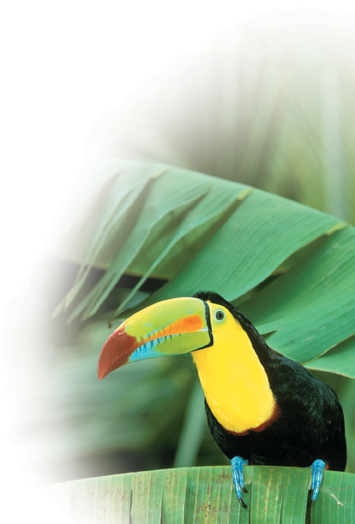 Evolution Taken as a group, living things evolve. Evolutionary change links all forms of life to a common origin more than 3.5 billion years ago. Evidence of this shared history is found in all aspects of living and fossil organisms, from physical features to structures of proteins to sequences of information in DNA. Evolutionary theory is the central organizing principle of all biological and biomedical sciences.
Evolution Taken as a group, living things evolve. Evolutionary change links all forms of life to a common origin more than 3.5 billion years ago. Evidence of this shared history is found in all aspects of living and fossil organisms, from physical features to structures of proteins to sequences of information in DNA. Evolutionary theory is the central organizing principle of all biological and biomedical sciences.
 Structure and Function Each major group of organisms has evolved its own particular body part “tool kit,”—a collection of structures that have evolved in ways that make particular functions possible. From capturing food to digesting it, and from reproducing to breathing, organisms use structures that have evolved into different forms as species have adapted to life in different environments. The structures of wings, for example, enable birds and insects to fly. The structures of legs enable horses to gallop and kangaroos to hop.
Structure and Function Each major group of organisms has evolved its own particular body part “tool kit,”—a collection of structures that have evolved in ways that make particular functions possible. From capturing food to digesting it, and from reproducing to breathing, organisms use structures that have evolved into different forms as species have adapted to life in different environments. The structures of wings, for example, enable birds and insects to fly. The structures of legs enable horses to gallop and kangaroos to hop.
 Unity and Diversity of Life Although life takes an almost unbelievable variety of forms, all living things are fundamentally similar at the molecular level. All organisms are composed of a common set of carbon-based molecules, store information in a common genetic code, and use proteins to build their structures and carry out their functions. One great contribution of evolutionary theory is that it explains both this unity of life and its diversity.
Unity and Diversity of Life Although life takes an almost unbelievable variety of forms, all living things are fundamentally similar at the molecular level. All organisms are composed of a common set of carbon-based molecules, store information in a common genetic code, and use proteins to build their structures and carry out their functions. One great contribution of evolutionary theory is that it explains both this unity of life and its diversity.
 Interdependence in Nature All forms of life on Earth are connected into a biosphere, which literally means “living planet.” Within the biosphere, organisms are linked to one another and to the land, water, and air around them. Relationships between organisms and their environments depend on the cycling of matter and the flow of energy. Human life and the economies of human societies also require matter and energy, so human life depends directly on nature.
Interdependence in Nature All forms of life on Earth are connected into a biosphere, which literally means “living planet.” Within the biosphere, organisms are linked to one another and to the land, water, and air around them. Relationships between organisms and their environments depend on the cycling of matter and the flow of energy. Human life and the economies of human societies also require matter and energy, so human life depends directly on nature.
 Science as a Way of Knowing Science is not a list of facts, but “a way of knowing.” The job of science is to use observations, questions, and experiments to explain the natural world in terms of natural forces and events. Successful scientific research reveals rules and patterns that can explain and predict at least some events in nature. Science enables us to take actions that affect events in the world around us. To make certain that scientific knowledge is used for the benefit of society, all of us must understand the nature of science—its strengths, its limitations, and its interactions with our culture.
Science as a Way of Knowing Science is not a list of facts, but “a way of knowing.” The job of science is to use observations, questions, and experiments to explain the natural world in terms of natural forces and events. Successful scientific research reveals rules and patterns that can explain and predict at least some events in nature. Science enables us to take actions that affect events in the world around us. To make certain that scientific knowledge is used for the benefit of society, all of us must understand the nature of science—its strengths, its limitations, and its interactions with our culture.
MYSTERY CLUE 
What human values or biases are involved in the case of giving HGH to healthy children? What role does science play in this case?

FIGURE 1–14 Different But Similar The colorful keel-billed toucan is clearly different from the plant on which it perches. Yet, the two organisms are fundamentally similar at the molecular level. Unity and diversity of life is an important theme in biology.
Table of Contents
- Formulas and Equations
- Applying Formulas and Equations
- Mean, Median, and Mode
- Estimation
- Using Measurements in Calculations
- Effects of Measurement Errors
- Accuracy
- Precision
- Comparing Accuracy and Precision
- Significant Figures
- Calculating With Significant Figures
- Scientific Notation
- Calculating With Scientific Notation
- Dimensional Analysis
- Applying Dimensional Analysis




